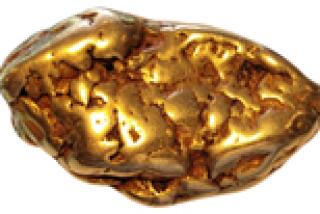Statue of Liberty Set Shows a Hefty Profit
- Share via
Question: I have an uncirculated set of Statue of Liberty coins. There is one silver dollar, one 50-cent piece and a gold coin. How is the value of the gold coin established? I paid $165 for the set. The appreciation of the gold coin must start at some primary basic value. That value is what I am interested in.--E.A.H.
Answer: The value of gold (and silver too, for that matter) is determined daily in the marketplace. Gold has an intrinsic value and that varies day to day. Now, a certain amount of gold is used in gold coinage. In the case of the Statue of Liberty gold piece, the coin consists of 7.5321 grams of gold, .5015 grams of silver and .3334 grams of copper. Someone computes the value of these basic metals, factors in production and distribution costs and comes up with a figure to charge for the coin. The Statue of Liberty gold piece was given a $5 denomination and, as you point out, the three-piece set at one point was marketed by the Mint for $165.
It turns out that this was a good buy. While the government established the original price, it is the secondary market that fluctuates according to supply and demand. Dealers currently are paying $675 for the uncirculated set and $400 for the proof set. It remains to be seen what direction the market will take for this popular set. But for those who got theirs early, the profit margin is quite hefty.
However, true collectors are probably just satisfied with owning a set at this time. Coins, as I’ve said before, reflect history, and sometimes they’re very difficult to part with, regardless of the profit involved. The government takes its profit right off the top. After that, it’s up to the public.
Q: Do you have a record of a 1964-P multiple-struck cent that I was talked into buying about 15 years ago? Is it possible to get a legitimate and correct value on this particular coin?--H.R.
A: You can reasonably expect to get between $10 and $25 for your coin. As far as a “legitimate and correct” value is concerned, that’s between you and the buyer.
Q: I have enclosed a bill that is in fair condition and is legal tender. It is also signed in indelible ink. Will you please tell me if it has any value?--J.W.
A: Your $10 note dated Sept. 22, 1899, from the Lamberton National Bank is worth between $50 and $75, depending upon condition. Coin Calendar
Today-Sunday--The jumbo eighth annual Long Beach Numismatic & Philatelic Summer Exposition will feature 410 booths and about 1,500 dealers. The show, at the Long Beach Convention Center, will run 10 a.m.-8 p.m. today, Friday and Saturday; 10 a.m.-4 p.m. Sunday. The show will have an auction, coin booth for juniors, meetings by the Civil War Token Society and Early American Coppers and a talk on “Ike Dollars” by Alan Hager. For information, call (213) 436-3636. Coin News
The fourth edition (pictured) of “A Guidebook of Mexican Coins, 1822 to Date” by Theodore V. Buttrey and Clyde Hubbard is being released in a 256-page volume. Many recently discovered varieties of earlier Mexican issues are featured, along with updated pricing to reflect the current market. It is available from coin shops or from Krause Publications, 700 E. State St., Iola, Wis. 54990. The price is $11 plus $1.50 for postage and handling.
About 1,200 lots will be offered in the June sale at the Omni Park Central Hotel in New York. The auction by Stack’s will feature mint state and proof coins in all series of United States coins from the half cent to the dollar and from $1 to $50 gold. More than 50 pattern coins from the cent to the $5 gold will be offered. Catalogues are $10 from Stack’s, 123 West 57th St., New York, N.Y. 10019.
More to Read
Inside the business of entertainment
The Wide Shot brings you news, analysis and insights on everything from streaming wars to production — and what it all means for the future.
You may occasionally receive promotional content from the Los Angeles Times.










